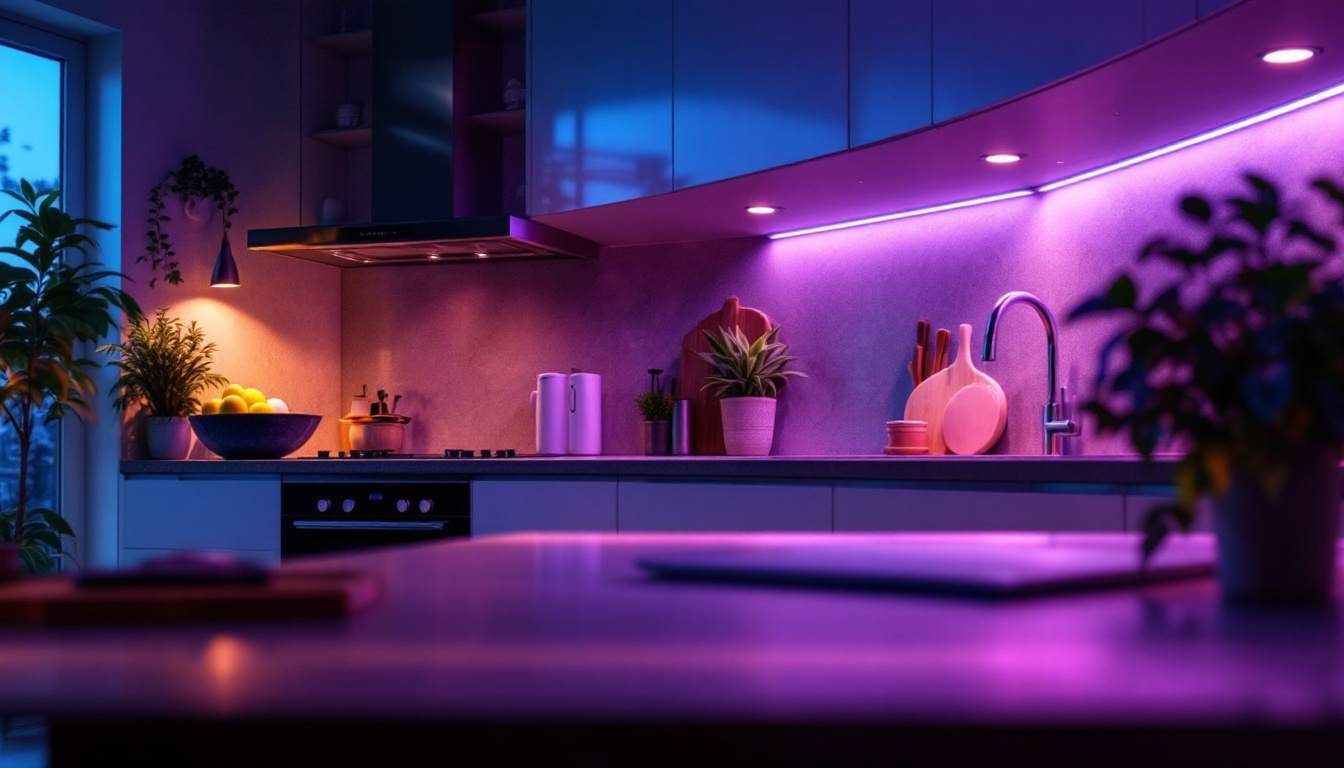
In the ever-evolving world of lighting solutions, photocell lights have emerged as a game-changer for both residential and commercial applications. For lighting contractors, understanding how to effectively utilize these innovative lighting systems can significantly enhance project outcomes and client satisfaction. This article delves into the advantages of photocell lights, their applications, and tips for contractors to maximize their success.
Photocell lights, also known as dusk-to-dawn lights, are equipped with sensors that automatically turn on at sunset and off at sunrise. This technology not only provides convenience but also improves energy efficiency and safety. By harnessing natural light, these systems reduce electricity consumption, making them an attractive option for environmentally conscious clients. Furthermore, the integration of photocell lights into outdoor lighting designs can enhance the aesthetic appeal of residential and commercial spaces, creating a warm and inviting atmosphere during the evening hours.
The core functionality of photocell lights lies in their light-sensing technology. A photocell sensor detects ambient light levels and activates the lighting system when darkness falls. This automation eliminates the need for manual operation and ensures that outdoor areas are consistently illuminated when needed. The simplicity of this technology is one of its greatest selling points for contractors. Additionally, many modern photocell lights come equipped with adjustable sensitivity settings, allowing users to customize when the lights turn on and off based on their specific preferences and local environmental conditions.
For lighting contractors, promoting the benefits of photocell lights can lead to increased sales and satisfied customers. Some key advantages include:
Moreover, the installation of photocell lights can significantly contribute to sustainability efforts. As communities increasingly focus on reducing their carbon footprint, the adoption of energy-efficient lighting solutions like photocell lights aligns perfectly with these goals. In addition to their environmental benefits, these lights can also be integrated with smart home systems, allowing for remote control and monitoring, further enhancing user convenience. This combination of technology and sustainability makes photocell lights a forward-thinking choice for modern lighting solutions.
Photocell lights are versatile and can be employed in various settings. Understanding their applications can help contractors tailor their services to meet specific client needs.
In residential settings, photocell lights are ideal for illuminating driveways, pathways, and outdoor living spaces. Homeowners appreciate the convenience of having lights that turn on automatically, enhancing the security and ambiance of their properties. Contractors can offer customized solutions that integrate with existing landscaping and architectural features. Additionally, these lights can be programmed to work in conjunction with smart home systems, allowing homeowners to control their outdoor lighting remotely through mobile apps. This not only adds a layer of convenience but also allows for energy-efficient scheduling, ensuring that lights are only on when needed.
For commercial and industrial applications, photocell lights are invaluable in parking lots, building perimeters, and outdoor workspaces. Businesses benefit from the reduced energy costs and improved safety that come with well-lit environments. Contractors can leverage these benefits to secure contracts with commercial clients looking to upgrade their lighting systems. Moreover, the use of photocell lights can significantly enhance employee productivity, as well-lit areas reduce the risk of accidents and create a more inviting atmosphere. In warehouses and distribution centers, these lights can be strategically placed to illuminate loading docks and storage areas, ensuring that operations run smoothly even during late hours. The integration of motion sensors with photocell technology can further optimize energy savings by ensuring lights are only activated when movement is detected, providing an additional layer of efficiency for businesses aiming to minimize operational costs.
Not all photocell lights are created equal. When selecting the right products for a project, contractors must consider several factors to ensure optimal performance and client satisfaction.
There are various types of photocell lights available, including LED, halogen, and fluorescent options. LED lights are particularly popular due to their energy efficiency and long lifespan. When advising clients, contractors should weigh the pros and cons of each type, considering factors such as brightness, color temperature, and application suitability. For instance, while halogen lights may provide a warmer glow that some clients prefer for residential settings, they consume more energy and have a shorter lifespan compared to LEDs. Fluorescent lights, on the other hand, can be a cost-effective solution for larger commercial spaces, but they may not offer the same level of instant brightness or color rendering as LEDs. Understanding these nuances can help contractors guide their clients toward the best choice for their specific needs.
The sensitivity of the photocell sensor is another crucial factor. Some sensors can be adjusted to react to different light levels, allowing for greater customization based on the specific environment. Contractors should educate clients on the importance of selecting the right sensitivity settings to avoid premature activation or deactivation of the lights. For example, in areas with frequent street lighting, a sensor set too sensitively may cause lights to flicker unnecessarily, leading to frustration and potential safety concerns. Additionally, understanding the location and orientation of the sensor is vital; if the sensor is placed in a shaded area, it may not function as intended, leading to either overuse or underuse of the lighting system. By providing insights on these technical aspects, contractors can enhance the overall effectiveness of the lighting solution and ensure that it meets the expectations of their clients.
Proper installation is key to the successful operation of photocell lights. Lighting contractors should adhere to best practices to ensure that the systems function as intended and provide maximum benefit to clients.
The placement of photocell lights is critical. Sensors should be positioned where they can accurately detect ambient light without obstruction from trees, buildings, or other structures. Contractors should assess the site thoroughly before installation to determine the optimal locations for both the lights and the sensors.
Ensuring proper wiring and connectivity is essential for the reliable operation of photocell lights. Contractors should follow local electrical codes and guidelines to avoid potential issues. Additionally, using high-quality materials can help prevent future maintenance problems, enhancing the overall satisfaction of clients.
While photocell lights are designed for low maintenance, occasional issues may arise. Contractors should be prepared to address common problems to maintain client trust and satisfaction.
Encouraging clients to conduct regular inspections of their photocell lights can help identify potential issues before they become significant problems. This includes checking for dirt or debris on the sensor, which can interfere with its operation. Contractors can offer maintenance packages to ensure that clients’ systems remain in optimal condition.
Common issues with photocell lights include lights that do not turn on or off as expected. In such cases, contractors should guide clients through basic troubleshooting steps, such as checking the sensor’s positioning and ensuring that there are no obstructions. If problems persist, contractors may need to inspect the wiring or replace the sensor.
To maximize success, lighting contractors must effectively market their photocell lighting solutions. A well-thought-out marketing strategy can help attract new clients and retain existing ones.
Education is key when it comes to marketing photocell lights. Contractors should take the time to explain the benefits and functionalities of these systems to potential clients. Providing informational materials, hosting workshops, or creating online content can help demystify the technology and showcase its advantages.
Highlighting successful installations can serve as a powerful marketing tool. Contractors can create case studies or portfolio pieces that demonstrate the effectiveness of photocell lights in various applications. Positive testimonials from satisfied clients can further bolster credibility and attract new business.
The lighting industry is continuously evolving, and staying ahead of trends is essential for contractors looking to maximize success. Emerging technologies and innovations in photocell lighting are set to shape the future of this market.
As smart home technology becomes increasingly popular, the integration of photocell lights with smart systems is likely to gain traction. Contractors should stay informed about these advancements and consider offering smart photocell solutions that allow clients to control their lighting remotely or automate it based on their preferences.
With a growing emphasis on sustainability, the demand for energy-efficient lighting solutions is expected to rise. Photocell lights, particularly LED options, align perfectly with this trend. Contractors who emphasize the environmental benefits of these systems can position themselves as leaders in sustainable lighting solutions.
Photocell lights represent a significant opportunity for lighting contractors to enhance their service offerings and meet the evolving needs of clients. By understanding the technology, its applications, and best practices for installation and maintenance, contractors can maximize their success in this competitive market. As the industry continues to evolve, staying informed about trends and innovations will be crucial for long-term growth and client satisfaction.
Ready to elevate your lighting projects with the advanced technology of photocell lights? At LumenWholesale, we provide lighting contractors with the highest quality, spec-grade lighting products at unbeatable wholesale prices. Say goodbye to local distributor markups and hello to superior lighting solutions that meet the highest industry standards. With our hassle-free bulk buying and free shipping, you can ensure your projects shine with reliability and high performance, all while keeping your costs down. Don’t compromise on quality or value—choose LumenWholesale for your next project. Discover our extensive selection and experience the perfect blend of quality, affordability, and convenience. Wholesale Lighting at the Best Value.

Discover the essential insights lighting contractors need to know about outdoor solar lights.

Discover how exterior pendant lights can be a game-changer for lighting contractors looking to win more bids.

Discover the essential facts about under-counter LED lighting that every contractor needs to know.

Discover the key factors that distinguish top lighting contractors when it comes to fluorescent tube LED replacements.